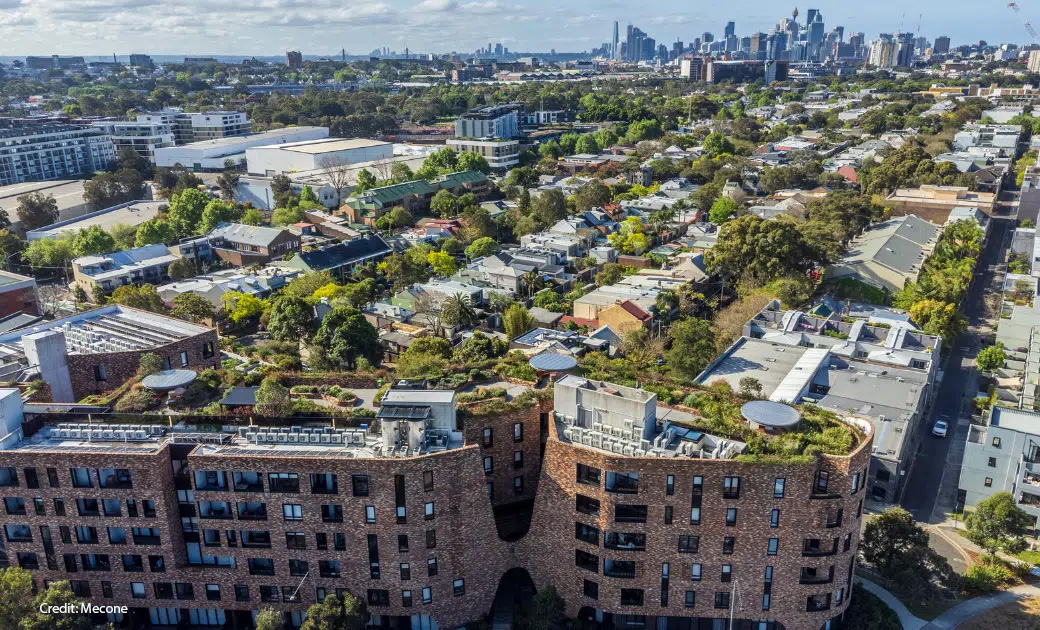
NSW Housing Reforms Reveal Critical Market Gaps
NSW Housing Reforms Reveal Critical Market Gaps
NSW Housing Reforms Reveal Critical Market Gaps
NSW promises 112,000 homes through "missing middle" reforms over five years. The state delivered just 11,220 new homes in the July-September 2024 quarter.
There is a fundamental disconnect between policy ambition and market reality that creates immediate investment opportunities.
I've analysed the Planning Minister's comprehensive reform package against current delivery rates, financing constraints, and approval bottlenecks. The findings reveal significant opportunities for institutional investors, and commercial real estate financiers who understand where the real gaps lie.
The Transport Oriented Development (TOD) Reality Check
The government's flagship program targets 170,000 homes around 37 train stations over 15 years. This averages 11,333 homes annually across all targeted locations, as outlined in the Transport Oriented Development Program.
Current NSW quarterly delivery sits at 11,220 homes statewide. The TOD program alone requires matching total state output just from transit zones. This creates immediate pressure on construction capacity, materials, and most critically, project financing at scale.
For CFOs and institutional investors, this represents a clear arbitrage opportunity. The government has essentially guaranteed demand concentration in specific geographic corridors with existing infrastructure. Risk-adjusted returns improve significantly when development occurs in predetermined, government-backed zones with established transport infrastructure that reduces development risk premiums.
The challenge lies in financing mechanisms that can handle this volume.
Missing Middle Housing Faces Financing Middle
The 112,000 homes from missing middle reforms sound impressive until you examine the financing reality. These developments typically fall into an awkward financing gap.
Too large for residential construction loans. Too small for commercial real estate financing.
Traditional banks remain cautious about medium-density projects, particularly in areas without established comparable sales. The reforms address planning permission but ignore the capital access problem that has constrained this housing type for years. The Reserve Bank's analysis confirms that financing constraints remain a significant barrier to medium-density development.
This creates opportunities for alternative lenders and specialised financing platforms that can bridge this gap efficiently. Projects in this category typically require $2-15 million in construction financing, with margins 200-400 basis points above traditional residential lending rates due to perceived complexity. The regulatory framework now supports the development type, but the financing infrastructure remains underdeveloped, creating significant first-mover advantages for platforms that can efficiently assess and price this risk.
The Pre-sale Guarantee Program's Hidden Mechanics
The government's $1 billion Pre-sale Finance Guarantee program offers the most interesting commercial opportunity within these reforms. As detailed in the Pre-sale Finance Guarantee program, this addresses pre-sale financing challenges.
The program guarantees purchase of up to 50% of dwellings in eligible projects, with commitments ranging from $5-50 million per project. This effectively removes pre-sale risk from construction financing equations.
However, the program's commercial structure remains unclear. What pricing mechanisms will determine government purchase prices? How will market fluctuations affect guarantee values? What happens to these government-purchased units in different market conditions?
For sophisticated investors, this program represents a form of government-backed put option on residential development projects with potential IRR improvements of 300-500 basis points through reduced pre-sales risk. The risk transfer mechanism could fundamentally alter project return profiles and financing structures, potentially reducing required equity contributions by 20-30% while maintaining target returns.
Smart money will focus on understanding these guarantee mechanics before they become widely utilised.
The Affordability Paradox
Sydney ranks as the second most unaffordable city globally, requiring over 13 years of median income to purchase a median-priced home.
The reforms focus entirely on supply-side solutions while ignoring the demand-side financing reality.
Increasing housing supply without addressing purchase financing mechanisms may simply shift the affordability problem rather than solve it. More supply at current price points still requires buyers who can access appropriate financing.
This creates opportunities for innovative financing structures that can bridge the gap between housing supply and purchase capability. The government has created the supply framework, but the demand financing infrastructure remains inadequate.
Commercial Real Estate Financing Under Pressure
While NSW focuses on residential reforms, significant commercial real estate refinancing challenges persist globally, with Australian CRE representing billions in refinancing requirements. Higher interest rates and construction costs create refinancing challenges that dwarf the residential financing gaps, with many borrowers facing substantial rate increases on refinancing.
The housing reforms indirectly pressure commercial real estate by competing for construction resources, materials, and financing capacity. Residential development incentives may draw capital away from commercial projects at precisely the wrong time. The Australian Financial Review Property Summit has highlighted this resource competition between residential and commercial development.
This environment favours financing platforms that can efficiently match global capital with local commercial real estate opportunities, particularly those that can navigate regulatory complexity while maintaining competitive speed.
The Digital Financing Opportunity
These reforms expose the fundamental inefficiency in current real estate financing systems. Multiple approval pathways, varying guarantee programs, complex pre-sale requirements, and diverse project types create a maze that traditional financing approaches handle poorly.
The opportunity lies in digital platforms that can streamline the entire financing process with complete certainty at digital speed.
Projects that can navigate regulatory complexity, access appropriate financing, and manage approval processes efficiently will capture disproportionate value in this reformed environment. Streamlined processes have already resulted in a 26% increase in development applications.
The government has created the policy framework. The market opportunity belongs to those who can solve the financing and process management challenges that remain.
NSW's housing reforms represent a significant policy shift, but their success depends entirely on market participants who can bridge the gap between regulatory permission and financial reality.
The real opportunity lies not in the reforms themselves, but in building the systems that make them actually work.
References
NSW Planning Department: "Transport Oriented Development Program." https://www.planning.nsw.gov.au/policy-and-legislation/housing/transport-oriented-development-program/transport-oriented-development
NSW Planning Department: "Pre-sale Finance Guarantee." https://www.planning.nsw.gov.au/policy-and-legislation/housing/pre-sale-finance-guarantee
NSW Productivity Commission: "Review of housing supply challenges and policy options for New South Wales." November 2024. https://www.productivity.nsw.gov.au/sites/default/files/2024-11/20241114_NSW-PEC-report-Review-of-housing-supply-challenges-and-policy-options-for-New-South-Wales.pdf
Reserve Bank of Australia: "Statement on Monetary Policy." August 2025. https://www.rba.gov.au/publications/smp/2025/aug/
Australian Financial Review: "Property Summit." https://live.afr.com/propertysummit/
Property Council of Australia: "NSW building completions heading in wrong direction." https://www.propertycouncil.com.au/media-releases/nsw-building-completions-heading-in-wrong-direction

